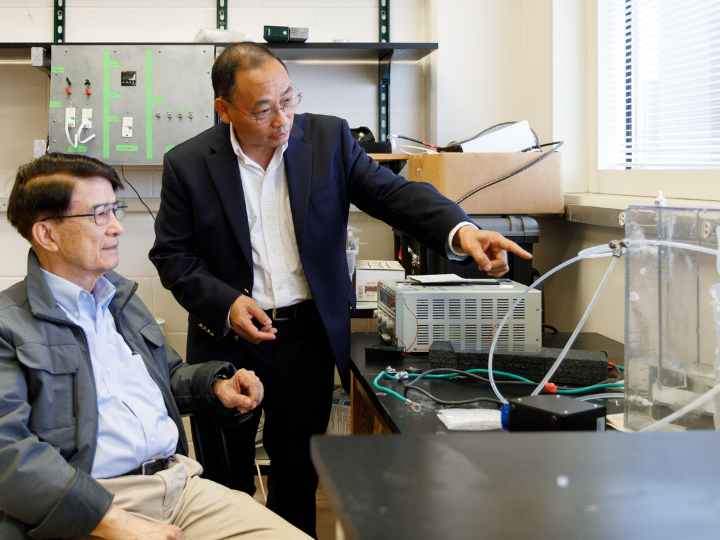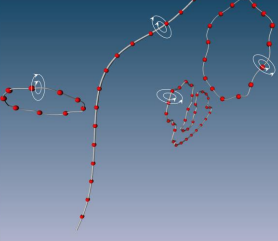2022-05-04 ヒューストン大学(UH)

Zhifeng Ren (right), M.D. Anderson chair professor and director of The Texas Center for Superconductivity at the University of Houston (TcSUH), demonstrates his research group’s seawater electrolysis experiment for professor Paul Chu (left), TcSUH’s founding director and chief scientist.
米国科学アカデミー紀要に掲載された論文の中で、彼らは、工業規模で海水電解から水素を製造するために使用されている現在の技術が、3つの主要な要因によって妨げられていると指摘しています。海水は腐食性があり、触媒の寿命を縮める。現在の触媒を用いた電気分解では塩素ガスが発生する可能性があり、これを防ぐ必要がある。また、酸素発生反応(OER)に現在用いられている電極触媒は、コストに見合うだけの要件を満たしていない。
物理学教授でTcSUH所長の任志峰が率いる研究チームは、この多元系電極触媒が、これまで報告されている遷移金属系OER電極触媒の中で最も優れた性能を持つことを見出し、海水電解技術の発展を後押しする可能性があると示唆した。
<関連情報>
- https://uh.edu/news-events/stories/2022-news-articles/april-2022/05042022-seawater.php
- https://www.pnas.org/doi/abs/10.1073/pnas.2202382119
均一系多金属層状複水酸化物電極触媒による海水酸化の高性能化 High-performance seawater oxidation by a homogeneous multimetallic layered double hydroxide electrocatalyst
Luo Yu, Jiayong Xiao, Chuqiang Huang, Jianqing Zhou, Ming Qiu, Ying Yu, Zhifeng Ren zren, Ching-Wu Chu , and Jimmy C. Yu
Proceedings of the National Academy of Sciences Published: April 27, 2022
DOI:https://doi.org/10.1073/pnas.2202382119
Abstract
Seawater electrolysis is an intriguing technology for sustainable hydrogen production that will not exacerbate the global shortage of freshwater or increase carbon emissions. However, due to the undesirable anodic chlorine evolution reaction and the strong corrosiveness of seawater, this technology is significantly hindered by a lack of robust oxygen evolution reaction (OER) electrocatalysts that exhibit high activity, high selectivity, and good stability. Here, we demonstrate a homogeneous multimetallic catalyst consisting of Ni and Fe coincorporated into CuCo layered double hydroxide (denoted as NiFe-CuCo LDH) that serves as an active and durable OER electrode for high-performance seawater electrolysis. With abundant exposed multimetal sites and well-defined micronanostructures, the NiFe-CuCo LDH catalyst requires overpotentials of only 259, 278, and 283 mV to yield current densities of 100, 300, and 500 mA cm−2, respectively, in 6 M KOH seawater electrolyte. Moreover, it exhibits very high OER selectivity (Faradaic efficiency of 97.4% for O2 at 500 mA cm−2) and superior durability during operation, working stably under a large current density of 500 mA cm−2 for up to 500 h in 6 M KOH seawater electrolyte. This multimetallic electrocatalyst is one of the best performing ones among all reported transition-metal-based OER electrocatalysts in alkaline seawater electrolyte, which boosts the development of seawater electrolysis technology.



